DeadSpace: 7 Reasons Why MySpace is as Good as Dead
August 2009
By The Architect
The first behemoth of social networking,
MySpace—now owned by
Fox Interactive Media—is on its way to its grave, with no one to blame but itself.
MySpace’s popularity hit its apex in March 2008. In the following month, it was overtaken by its first real competitor,
Facebook. But the writing was on the wall long before that. Web developers and architects all over knew that MySpace was doing it wrong. Surely at least a few of its own developers knew this and pushed for change.
Still, MySpace was the slowest to adapt. For a site of that magnitude—including all of its systems, engineering and hacks to make it function—change does not come easy or cheap. The site was not built to do or handle what it attempts to do today, and its poor framework and conventions of interaction are a reflection of that.
This is where the ever-important step of planning and laying a site’s foundation is so important. MySpace architects did not effectively build the system to be much more than a novelty. And while MySpace is not your average website, it serves as a lesson in utility for anyone charged with planning, building and running a website on any scale.
If a better alternative in Facebook had never come along, MySpace would not be in this position nor would it have pushed to try to make any changes, even in the eleventh hour. People still want to connect to other people, share things they care about and display certain aspects of their life. Whether you agree with those aspects of our culture or not, they do exist, and MySpace fulfilled those motivations for a time.
All you need is one competitor, however, one other option entering the marketplace, and the incumbent developers will be challenged to fight to the death. MySpace’s architects and developers simply could not live up to that challenge.
In 2008, MySpace did begin to introduce features, tweak aspects of its foundation and attempt to crack down on the juggernauts of spam bots plaguing the site—but by then people didn’t care. Facebook came along, presented a better option, and people moved with little doubt that they would ever return to MySpace. Thus, in the same way it virally grew, MySpace will die by the same domino effect that catapulted its popularity.
Let’s examine seven key elements of MySpace that rushed MySpace to its grave.
(It should be noted that the following screenshots were purely at random and were very, very easy to find.)
1: Out-of-control design framework
Of the people you know, how many could lay plans for their own house, paint a beautiful portrait worthy of hanging in your living room or perform cosmetic surgery? Chances are, few.
There are just certain things that some people have no business doing, either lawfully or for the sake of the rest of us. Designing websites is one of those things.
Designers are in a unique class of professionals, and good web design is an exact art and science. MySpace disagrees, however, and allows their users to hack everything in the page until nothing is usable, legible or tolerable.
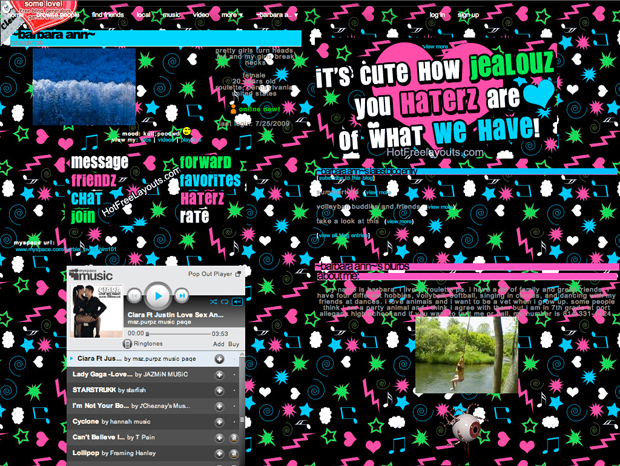
Pages are riddled with high-res backgrounds, text isn’t protected, and colors, styles and sizes are fully unlocked—just to name a few. All of this creates a design playground which breeds annoying layouts that distract from the page's content.
In contrast, Facebook has chosen to restrict at least the foundational framework of the site.
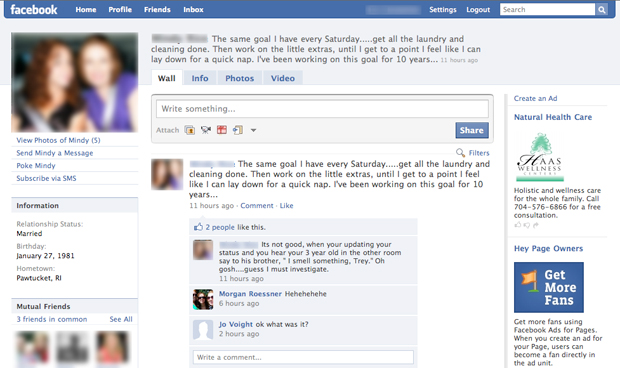
While customization is an important aspect, it shouldn’t be allowed at the risk of the functional system—the very heart of a social networking site’s brand and reputation.
2: Auto-play music
People love music. It’s one of the few ubiquitous facets of life. In fact, Apple’s famed comeback as a technological and cultural superpower was all a carefully conceived plan to tap into our common love for music—and they rode that all the way to billion-dollar profits.
In contrast, MySpace taps into music to annoy the living hell out of most of us. In fact, it should be noted that all non-prompted audio anywhere, on any page, is a widely unacceptable and an unwanted "feature." This goes for ads, auto-play videos, and most important, unexpected, blaring music overlaid on what you might be listening to already.
3: Identities
The days of Internet handles are coming to a close. Yes, there was a time when one would be known as “Biker5445,” as systems continued to use usernames as main identifiers. Of course, Internet e-mail systems will still use some form of handles for some time. Most of today’s websites, however, no longer need to do this—particularly social networking sites.
This is even more important due to recent news and events concerning privacy and security. The use of a handle is only good for concealing identity, and that doesn’t mix well in a site intended to connect people. What good can come from that policy in a social networking site?
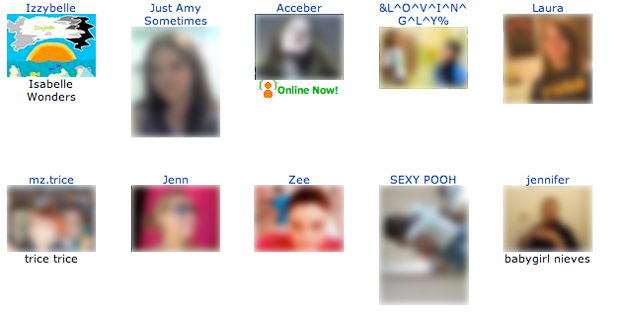
MySpace did eventually get clued into this basic, fundamental issue and started asking its users for their real name as an option:
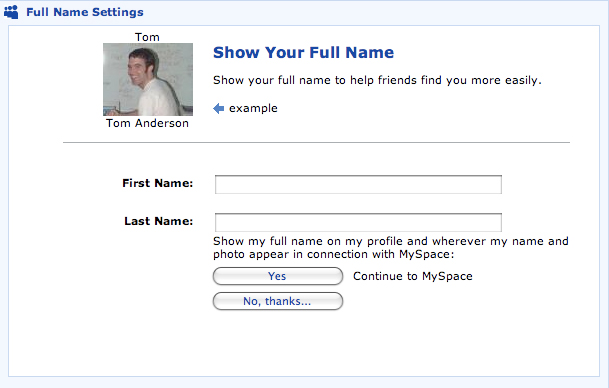
Again, too little too late.
4: Little focus on content with a horrible user interface
There’s actually too much of this subject matter to fit within this article’s short space. One could write volumes about the sheer usability and UI issues that plague MySpace. One thing is for sure, this aspect is a website killer, no matter if you are local deli or a major social networking site.
In the case of MySpace, most interactions and conversations occur within a never-ending, scrolling guestbook. These “comments” also have very little restrictions and are filled with a cacophony of text, pictures, videos and animated gifs—all without any context in the conversation. Ultimately, the interface leaves everyone reading essentially one-half of an e-mail conversation between two people and no one else.
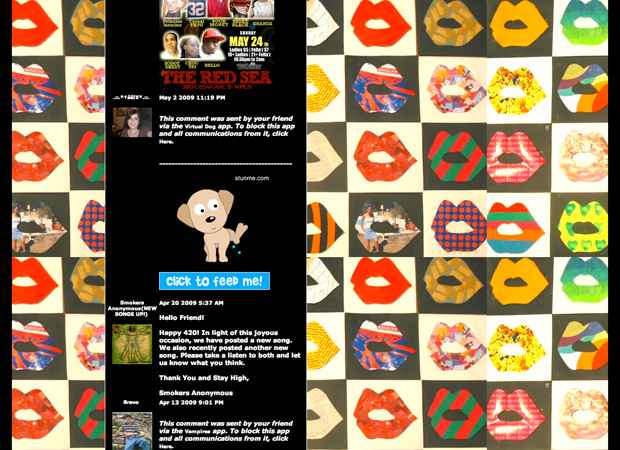
That’s just the beginning. Features that are, at best, a one-time read about a person’s interests, life story, and favorite music, movies, books, television shows, heroes and foods are typically placed near the top of the page in one long column. Whether you have an interest in any of this stuff or not, you’re treated to it every time.
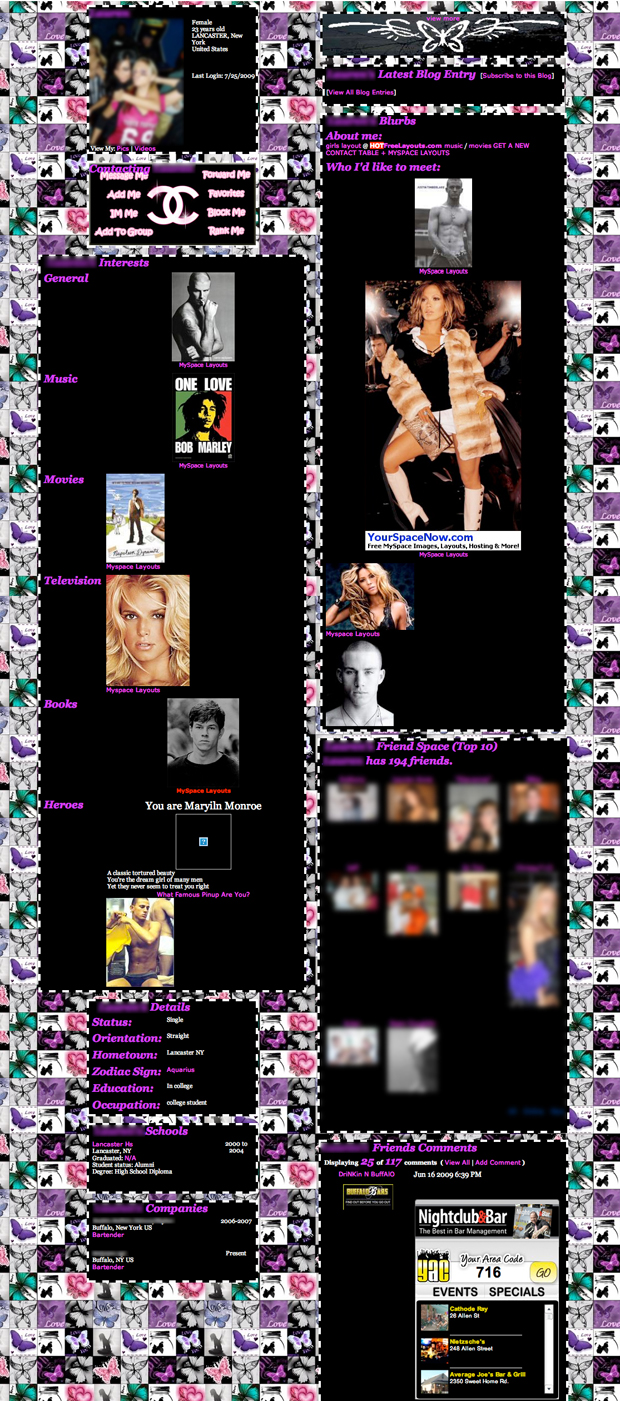
The list goes on, but we just can’t stomach any more.
5: MySpace has cultivated a raunchy, immature base
MySpace’s culture—formed by the foundation created by its architects—has without a doubt developed an immaturity and a raunchiness that is unique to MySpace.
It’s widely known that MySpace has sold-out to become a platform built around dating, which doesn’t help its state in terms of the quality of content. You can easily find all the "vital" statistics that you want from a date on most pages—everything from sexual orientation, build types, even income takes headline status. The archetypical “MySpace photo” is often mocked and mimicked today by a photo with the person in a sexually suggestive pose, with bright light and the camera aiming down from above.
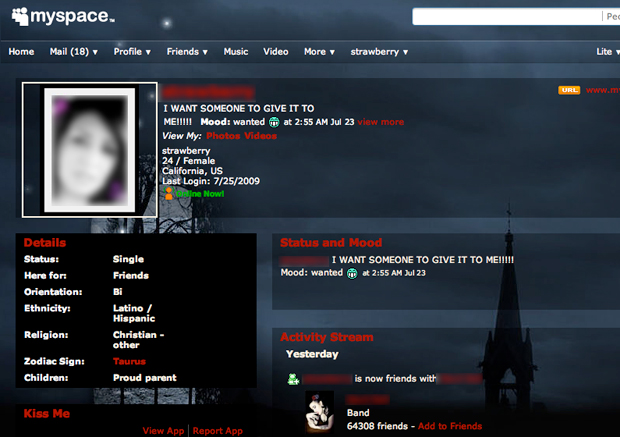
It’s not just about sexually suggestive material, but about the framework of how MySpace works. The site can’t be responsible for user’s content, or perhaps lack of content, but what MySpace’s architects have built promotes an underlying immaturity that is not present in Facebook—at least not yet. Coupled with all the other out-of-control elements, a light click-through of MySpace easily resembles a walk down a tattered, defaced red light district.
And why is Facebook not facing this degree of the problem? Its architects have planned better. Perhaps it’s embracing the common sense of restricting anonymity. Perhaps it’s because Facebook doesn’t allow layouts and its interface to go nuts. Either way, it’s well-known that Facebook has attracted a more mature presence and left MySpace with the rest.
If you have never experienced this cultural difference, click around random pages in MySpace—if you dare. Chances are, you don't need to and you're just nodding along with the rest of us.
6: Inordinate number of ads
News Corp is definitely profit-centric. Whatever soul MySpace ever had, it was sold to the highest bidder ages ago. The number of large, animated, irritating, irrelevant and sometimes offensive ads compared to what matters—content and utility—is terribly imbalanced.
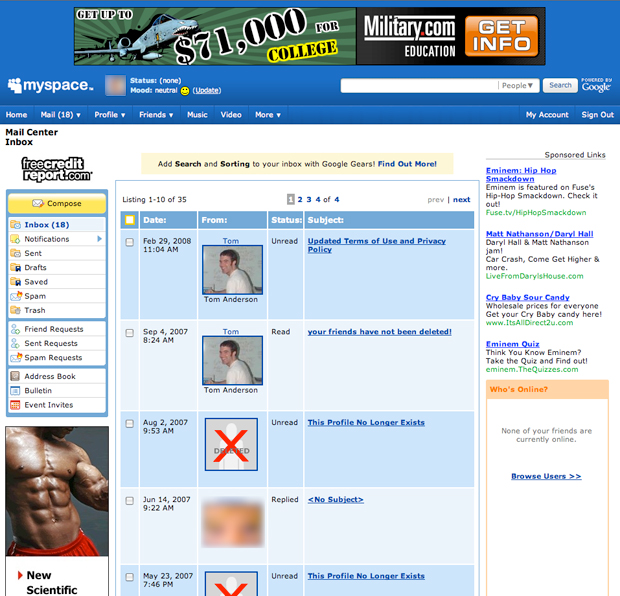
While Facebook has yet to turn a profit at the date of this article, it will eventually need to solve this problem and will most certainly shift its balance as well. Until the day comes when Facebook burns through its cash faster than investors can pour it in, this difference makes it an easy switch from MySpace to Facebook.
7: Spam
If there’s one thing that’s notorious on MySpace, it’s spam. The site’s spam comes in many forms, but the most prevalent are the spam bots for sex and dating sites. They pose as skanky figures, companies, scam artists, music groups and interest groups, which scour friend lists in public profiles and send out friend requests to drive traffic to their MySpace page or other shady website.
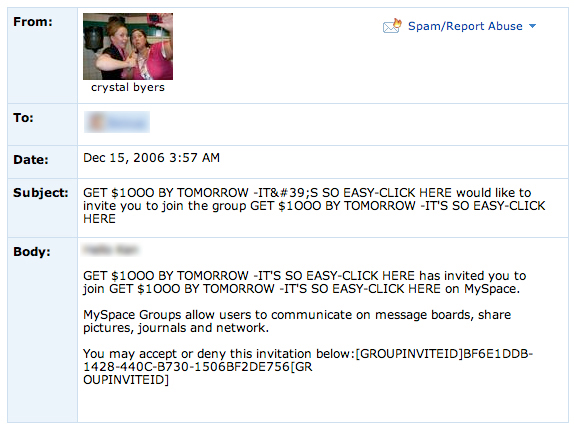
MySpace came to its senses in recent times, figuring that this was annoying people beyond limits and started to ruthlessly crackdown. Again, too late. The brand of MySpace, “A Place for Friends,” became “MySpace—A Place For Sleazy Marketers.”
The Future
While MySpace's reputation is dead, Facebook isn’t perfect either. In fact, more and more people are becoming annoyed with its limitations and methods as well. It is still plagued with its own problems, some of them similar to MySpace in terms of its core usage.
Simply put, there are things that “social networking” sites should be doing and they are not, along with things that they are doing and shouldn’t be.
Facebook is—for the moment—simply a better option. But it’s got a thin line to walk as well, not the least of which is to actually turn a profit. With MySpace as good as buried, look to Facebook to begin making changes to address the pressures of creating more revenue. The balance between utility and profits will be tilted. The question is how much will it tilt and how much will be sacrificed when the next social networking site comes along and ups the ante?
More...
MySpace Helps News Corp Lose $363 Million [Mashable]
Behind every superstar website there is an architect, scrutinizing every single detail, cutting through the nonsense, and challenging every aspect to craft a masterpiece that gets noticed and gets results.